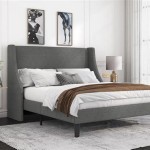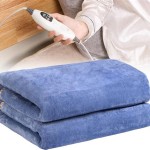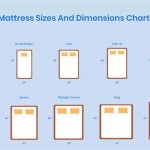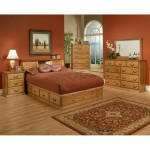Can Bed Bugs Bite Through Encasements?
Bed bugs are persistent pests that can be difficult to eliminate. These tiny insects feed on human blood, causing itchy bites and potential allergic reactions. While encasements are an effective means of preventing infestations, a common question arises regarding their ability to withstand these determined parasites. Can bed bugs bite through encasements?
The answer is not straightforward. While encasements are designed to create a barrier against bed bugs, their effectiveness can vary depending on the type of encasement, the material of the encasement, and the size and persistence of the bed bugs.
Understanding Bed Bug Encasements
Bed bug encasements are protective coverings designed to trap bed bugs within a sealed environment. They are usually made from tightly woven, zippered materials that restrict the passage of bed bugs and their eggs. Encasements are commonly used for mattresses, box springs, pillows, and other bedding items.
How Bed Bugs Attempt to Penetrate Encasements
Bed bugs are known for their tenacity. They are persistent and often develop innovative ways to gain access to food sources. While encasements create a physical barrier, bed bugs may attempt to penetrate them through several methods:
- Zipper openings: Bed bugs might attempt to enter or exit the encasement through the zipper opening. If the zipper is not properly sealed or damaged, it offers a possible access point.
- Tears or holes: Even minor tears or holes in the encasement material can provide a pathway for bed bugs. These tears could be caused by sharp objects, wear and tear, or even the bed bugs themselves, creating small openings over time.
- Seam slippage: Some encasements lack a secure seam, allowing bed bugs to wriggle through the gap between the material and the zipper. This is especially common with older or lower-quality encasements.
- Material penetration: While unlikely, certain bed bug species may be adept at chewing through thin or low-quality encasement material, especially if they are highly motivated and have limited other options.
Factors Affecting the Effectiveness of Encasements
The effectiveness of bed bug encasements depends on several factors:
- Type of encasement: The quality of the encasement material and its design significantly impact its effectiveness. Encasements with tightly woven, high-density materials and secure zippers provide a higher level of protection.
- Material of the encasement: Encasements made from thicker, durable materials, such as tightly woven polyester or nylon, are more resistant to bed bug penetration than thinner, more delicate materials.
- Age of the encasement: Over time, encasements may become damaged or worn, increasing the risk of bed bug penetration. Regular inspection and timely replacement are crucial for maintaining their effectiveness.
- Severity of the infestation: In cases of severe infestation, even a high-quality encasement may not prevent all bed bugs from reaching their food source. A comprehensive pest control plan is necessary to address a large infestation.
Best Practices for Encasement Use
To maximize the effectiveness of bed bug encasements, follow these best practices:
- Choose a high-quality encasement: Select an encasement made from durable, tightly woven material with a secure zipper and seams.
- Inspect the encasement regularly: Carefully check the encasement for any tears, holes, or loose seams. Replace it immediately if any damage is found.
- Properly fit and seal: Ensure the encasement fits tightly around the mattress, box spring, or other bedding item. Securely zip and tuck in any excess material.
- Combine with other pest control measures: While encasements serve as a barrier, they are not a standalone solution. Combine their use with other pest control methods, like professional treatment, vacuuming regularly, and washing bedding in hot water.
In conclusion, while encasements are a valuable tool in bed bug prevention, it is crucial to understand their limitations. Properly selected and maintained encasements can significantly reduce the risk of infestation, but they cannot guarantee complete protection.

Bed Bugs Do Mattress Encasements Help Pest Management Professional

Mattress Encasements For Bed Bugs

Can Bed Bugs Bite Through Mattress Encasements Find Out Now

Can You Still Get Bed Bugs With A Mattress Cover

Do Bed Bug Covers Work Integrity Solutions

The Best Mattress Covers For Bed Bug Protection

Are Bed Bug Mattress Covers Effective Encasing Stops Biting

Benefits Of Bed Bug Encasements Box Spring Covers

Bed Bug Facts What You Need To Know About N Bugs

Getting Rid Of Bed Bugs In Co Ways To Prevent Your Home
Related Posts







